Many dogs become extremely anxious during thunderstorms, which can be a challenging experience for both pet owners and their furry friends. Some dogs may even exhibit destructive behavior or become aggressive when they feel threatened by the loud noises and bright flashes of lightning. Fortunately, there are several home remedies that can be used to help calm a dog during a storm.
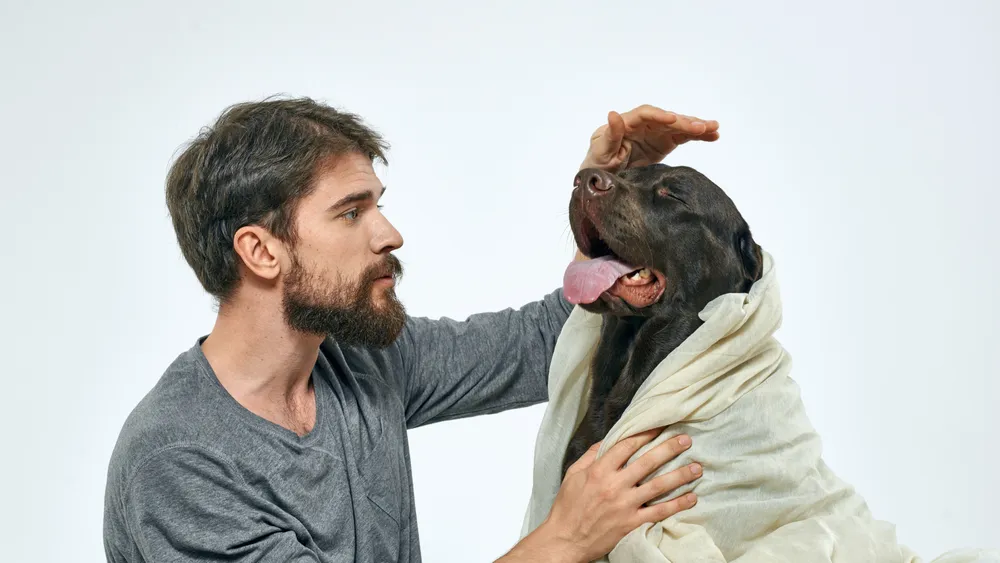
One of the most effective ways to calm a dog during a storm is to create a safe and comfortable space for them to retreat to. This could be a cozy corner of a room, a crate, or even a closet. Providing a familiar and secure environment can help to reduce a dog's anxiety and make them feel more at ease. It's also important to make sure that the space is free from any potential hazards, such as loose wires or sharp objects.
Another home remedy that can be used to calm a dog during a storm is to play soothing music or white noise. This can help to drown out the sound of thunder and provide a calming background noise for your pet. Some dogs may also benefit from the use of pheromone sprays or diffusers, which release calming scents that can help to reduce anxiety. By using these simple home remedies, pet owners can help their dogs feel more comfortable and secure during thunderstorms.
Understanding Dog Anxiety and Thunderstorms
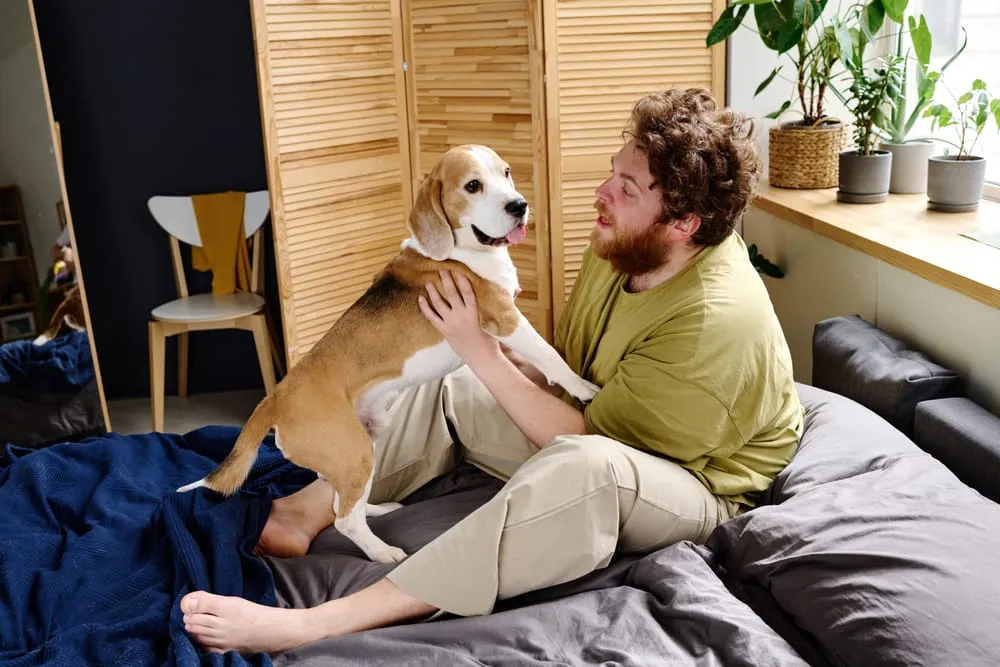
Dogs are known to be sensitive to loud noises, and thunderstorms are no exception. Many dogs experience anxiety during thunderstorms, which can manifest in various ways such as whining, panting, and hiding. Understanding the root of this anxiety can help pet owners alleviate their dog's discomfort.
Signs of Storm Anxiety in Dogs
There are several signs that a dog may be experiencing anxiety during a thunderstorm. These include:
- Whining or whimpering
- Panting or drooling excessively
- Hiding in a confined space
- Trembling or shaking
- Pacing or restlessness
- Destructive behavior
The Science Behind Storm Anxiety
The exact cause of storm anxiety in dogs is not fully understood, but it is believed to be a combination of factors. Loud noises, static electricity, and changes in barometric pressure can all contribute to a dog's discomfort. Additionally, dogs may have an instinctual fear of thunderstorms, as they can perceive them as a threat to their survival.
How Dogs Perceive Thunderstorms
Dogs have a heightened sense of hearing, which means that they are more sensitive to loud noises than humans. Additionally, dogs can sense changes in atmospheric pressure and static electricity, which can occur during a thunderstorm. These factors can cause a dog to feel disoriented and anxious.
By understanding the signs of storm anxiety in dogs and the science behind it, pet owners can take steps to alleviate their dog's discomfort during a thunderstorm. This may include creating a safe and comfortable space for the dog, using calming aids such as pheromone sprays or calming music, and providing positive reinforcement for calm behavior.
Creating a Safe Space
During a storm, dogs can become anxious and scared. Creating a safe space can help calm them down and make them feel secure. Here are some tips to create a safe space for your furry friend.
Choosing the Right Location
The location of the safe space is crucial. Choose a quiet room in your home where your dog feels comfortable. A room with no windows or with windows covered by curtains can help block out the sound and flashes of lightning. Make sure the room is easily accessible and has enough space for your dog to move around.
Making the Space Comforting
Make the safe space as comfortable as possible for your dog. Place a cozy bed or blanket on the floor, along with some of your dog's favorite toys. You can also add some calming scents, such as lavender or chamomile, to help relax your dog.
Use of Crates and Safe Rooms
If your dog is used to being in a crate, it can be a great tool to create a safe space. Cover the crate with a blanket or towel to create a den-like atmosphere. If your dog is not used to being in a crate, you can create a safe room instead. Use a baby gate to block off a small area of a room, and add all the comforting elements mentioned above.
Remember, creating a safe space for your dog during a storm can help reduce their anxiety and make them feel more secure. By following these tips, you can help your furry friend weather the storm with ease.
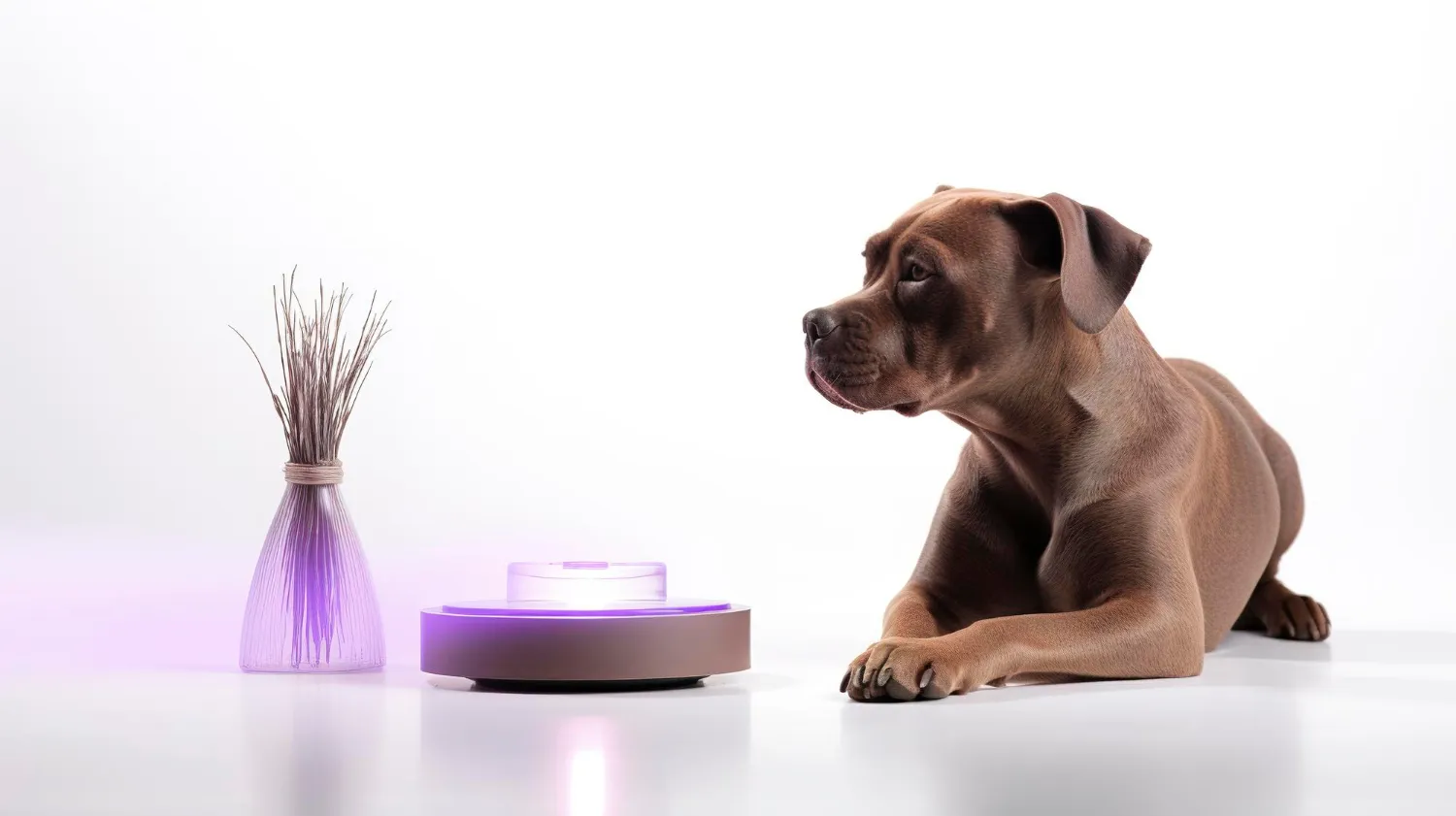
Calming Techniques and Products
Calming Products and Their Uses
There are a variety of products available to help calm a dog during a storm. One popular option is the Thundershirt, which applies gentle pressure to the dog's body to create a calming effect. Other calming products include oils, supplements, homeopathic remedies, CBD oil, and essential oils.
When choosing a calming product, it is important to carefully read the instructions and consult with a veterinarian. Some products may not be suitable for all dogs, and incorrect usage can lead to adverse effects.
Natural Remedies and Supplements
In addition to calming products, there are also natural remedies and supplements that can help calm a dog during a storm. These include chamomile tea, valerian root, and melatonin. These remedies can be administered orally or added to the dog's food.
It is important to note that natural remedies and supplements may not be effective for all dogs, and again, it is crucial to consult with a veterinarian before administering any new supplements or remedies.
The Role of Pheromones and Diffusers
Pheromones and diffusers can also be effective in calming a dog during a storm. Pheromones are naturally occurring scents that can have a calming effect on dogs. Diffusers release these scents into the air, creating a calming environment for the dog.
Common pheromones used in calming products include Adaptil and Feliway. These products can be purchased in diffuser form or as sprays.
Overall, there are a variety of calming techniques and products available for dogs during a storm. It is important to carefully read instructions and consult with a veterinarian before administering any new products or remedies.
Behavioral and Training Interventions
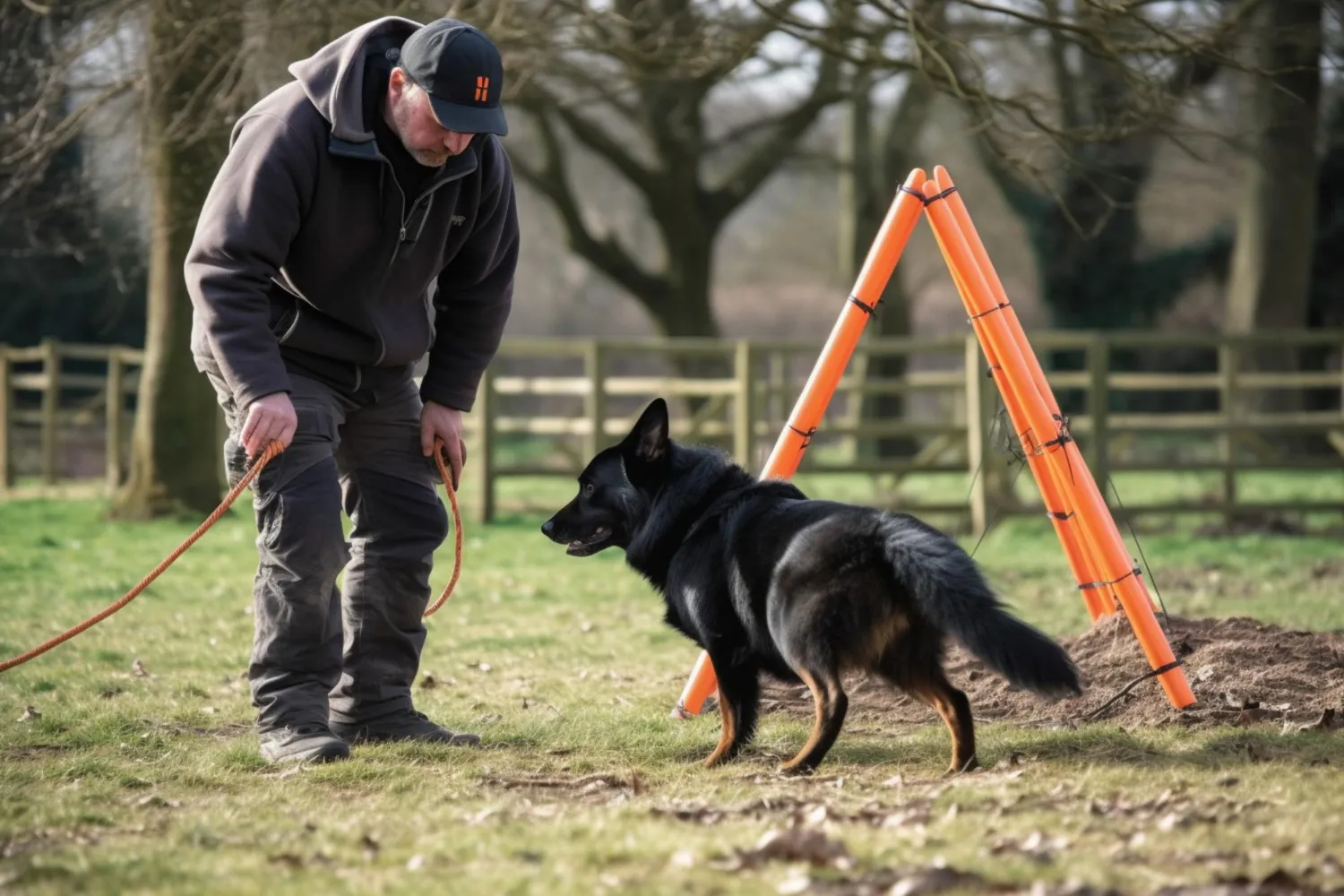
Desensitization Training Techniques
One of the most effective ways to calm a dog during a storm is through desensitization training. This involves gradually exposing the dog to the sounds and sights of a storm in a controlled environment. By doing this, the dog can learn to associate these stimuli with calmness rather than fear.
To start desensitization training, the owner should create a safe and quiet space for the dog to retreat to during a storm. The owner can then introduce the sounds of a storm, such as thunder and rain, at a low volume while the dog is in a calm state. Over time, the volume can be gradually increased, and the dog can be rewarded for remaining calm.
Working with a Behaviorist or Dog Trainer
Sometimes, a dog's fear of storms may be too severe for the owner to handle alone. In these cases, it may be beneficial to work with a behaviorist or dog trainer. These professionals can help identify the root cause of the dog's fear and develop a customized plan to address it.
A behaviorist or dog trainer may use a combination of desensitization training, positive reinforcement, and other techniques to help the dog overcome its fear of storms. They may also provide guidance on how to create a safe and calming environment for the dog during a storm.
Positive Reinforcement Strategies
Positive reinforcement is a powerful tool for calming a dog during a storm. This involves rewarding the dog for displaying calm behavior in the presence of storm stimuli. The rewards can be anything from treats to praise to playtime.
To use positive reinforcement effectively, the owner should start by identifying the dog's favorite rewards. They can then use these rewards to reinforce calm behavior during a storm. For example, if the dog remains calm during a thunderstorm, the owner can give it a treat or engage in playtime to reinforce the calm behavior.
Overall, behavioral and training interventions can be effective in calming a dog during a storm. Whether through desensitization training, working with a behaviorist or dog trainer, or using positive reinforcement, owners can help their dogs learn to associate storms with calmness rather than fear.
Environmental Adjustments

Reducing Noise and Distractions
One of the main reasons dogs become anxious during storms is due to the loud noises and changes in air pressure. To help reduce the impact of these stimuli, it may be helpful to create a quiet and comfortable space for your dog to retreat to.
White noise or background noise can help to drown out the sounds of the storm. This can be achieved through the use of a white noise machine or a fan. Playing classical music at a low volume can also help to soothe your dog during a storm.
Distractions can also be helpful in redirecting your dog's attention away from the storm. Providing your dog with a chew toy or puzzle toy can help to keep them occupied and reduce their anxiety.
Controlling the Indoor Environment
Making adjustments to the indoor environment can also help to reduce your dog's anxiety during a storm. Closing curtains or blinds can help to block out the flashes of lightning and reduce the impact of the storm on your dog.
Keeping the temperature comfortable can also help to reduce your dog's anxiety. Dogs can become more anxious when they are too hot or too cold, so it is important to maintain a comfortable temperature for them.
Overall, creating a quiet and comfortable space for your dog and making adjustments to the indoor environment can help to reduce their anxiety during a storm.
Dietary Considerations and Treats

Calming Treats and Chews
There are many calming treats and chews available on the market that can help to soothe a dog during a storm. These treats and chews are specifically designed to contain ingredients that can help to calm a dog's nerves and reduce anxiety.
Some popular calming treats and chews include:
- Zesty Paws Calming Bites
- NaturVet Quiet Moments Calming Aid
- Pet Naturals of Vermont Calming Treats
It's important to note that not all dogs will respond to these treats and chews, and some may require a higher dosage than others. It's always a good idea to speak with a veterinarian before giving your dog any new treats or supplements.
Dietary Adjustments for Anxious Dogs
In addition to calming treats and chews, there are also dietary adjustments that can be made to help calm an anxious dog during a storm. One of the most important things to consider is the type of food that the dog is eating.
Dogs that are prone to anxiety may benefit from a diet that is high in protein and low in carbohydrates. This is because protein can help to stabilize a dog's blood sugar levels, which can help to reduce anxiety.
Another dietary adjustment that can be made is to add peanut butter to the dog's food. Peanut butter contains tryptophan, which is an amino acid that can help to calm a dog's nerves. However, it's important to make sure that the peanut butter does not contain xylitol, as this can be toxic to dogs.
Overall, dietary adjustments and calming treats and chews can be effective ways to help calm a dog during a storm. However, it's important to remember that every dog is different and may require a different approach. It's always best to speak with a veterinarian before making any changes to a dog's diet or giving them new treats or supplements.
Professional Care and Medications
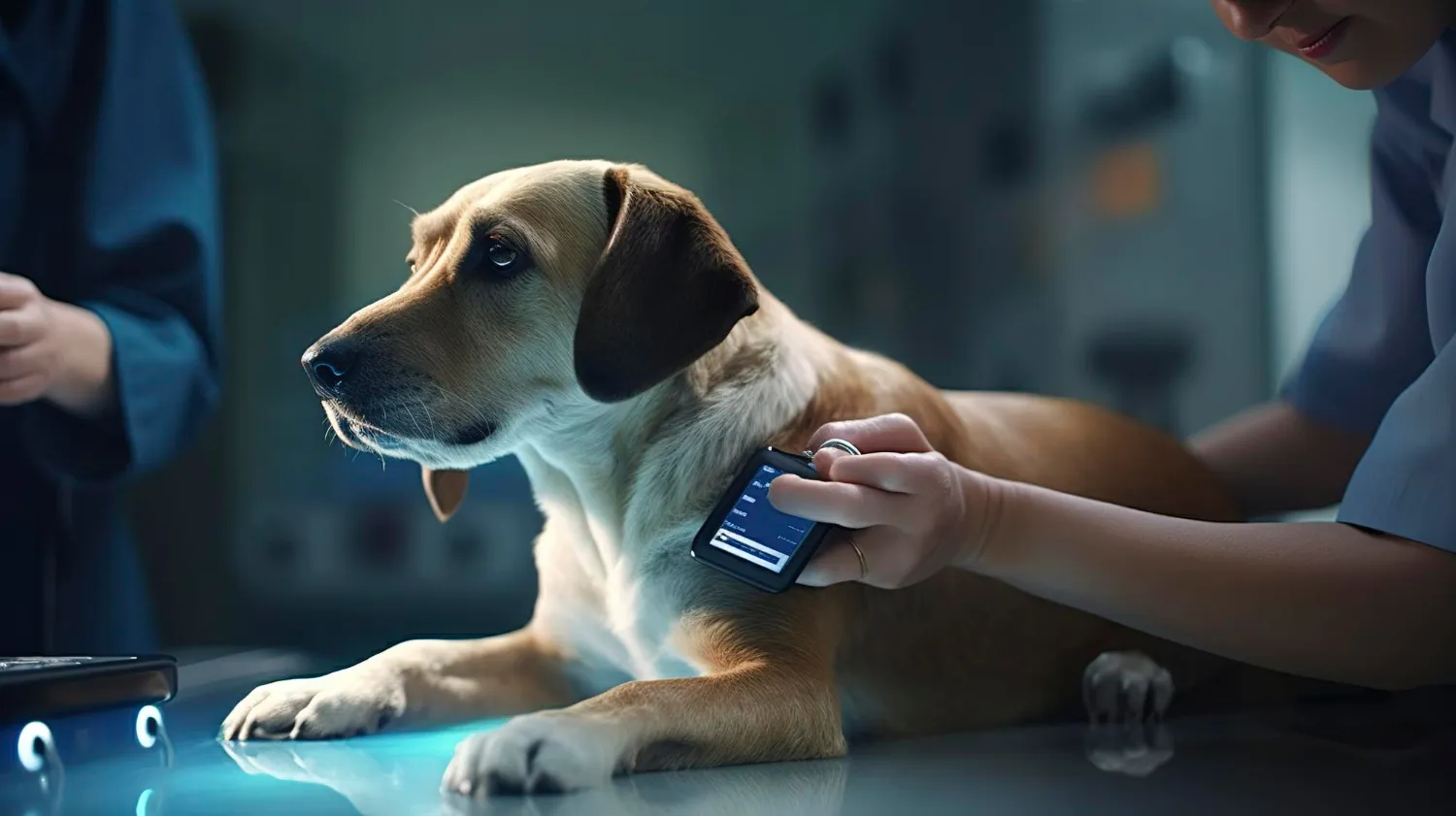
When to Consult a Veterinarian
In some cases, home remedies may not be enough to calm a dog during a storm. If a dog has severe anxiety or is experiencing physical symptoms such as vomiting or diarrhea, it is important to consult a veterinarian. A veterinarian can assess the dog's condition and recommend appropriate treatment.
Additionally, if a dog has a history of severe anxiety during storms, it may be beneficial to consult a veterinarian before a storm even occurs. The veterinarian can prescribe medications or recommend other treatments to help manage the dog's anxiety.
Medications for Severe Anxiety
In some cases, a veterinarian may prescribe medication to help calm a dog during a storm. Medications such as benzodiazepines and tricyclic antidepressants can be effective in reducing anxiety in dogs. However, it is important to note that these medications can have side effects and should only be used under the guidance of a veterinarian.
It is also important to note that medication should not be the only form of treatment for a dog with severe anxiety. Behavior modification techniques and environmental changes should also be implemented to help manage the dog's anxiety. A veterinarian can provide guidance on these techniques and changes.
Overall, while medication can be an effective tool in managing a dog's anxiety during a storm, it should only be used under the guidance of a veterinarian and in conjunction with other forms of treatment.
Preparing for Future Storms
When it comes to calming a dog during a storm, preparation is key. By taking some proactive steps, you can help your dog feel more at ease and reduce their anxiety levels during future storms. Here are some long-term strategies and emergency preparedness tips to consider:
Long-Term Strategies to Keep Your Dog Calm
- Desensitization: Gradually expose your dog to storm-like sounds and stimuli, such as thunder recordings or flashing lights, in a controlled and positive environment. This can help them become more accustomed to these situations and reduce their fear response.
- Exercise: Regular exercise can help your dog release energy and reduce stress levels. Make sure to take your dog for a walk or play with them before a storm is expected to hit.
- Anxiety Jacket: Consider investing in an anxiety jacket or vest for your dog. These products apply gentle pressure to your dog's body, similar to a hug, which can help them feel more secure and calm.
Emergency Preparedness for Sudden Storms
- Create a Safe Space: Designate a safe and comfortable space for your dog to retreat to during a storm. This could be a crate, a specific room, or a cozy corner with their favorite blanket.
- Calming Aids: Keep some calming aids on hand, such as treats or natural supplements, to help your dog stay calm during a sudden storm. Consult with your veterinarian to determine the best options for your dog.
- Stay Calm: Dogs can easily pick up on their owner's emotions, so it's important to stay calm and relaxed during a storm. Speak to your dog in a soothing voice and offer them comfort if they seek it.
By implementing these long-term strategies and emergency preparedness tips, you can help your dog feel more at ease during future storms and reduce their thunderstorm anxiety.
Conclusion
In conclusion, managing a dog's anxiety during thunderstorms requires a multi-faceted approach that includes creating a safe and comfortable environment, utilizing calming techniques and products, and considering dietary adjustments. For more severe cases, consulting a veterinarian for professional care and potential medication may be necessary. Preparing in advance with long-term strategies and having emergency measures in place can significantly reduce your dog's stress and ensure their well-being during storms. Remember, every dog is unique, and finding the right combination of strategies that work for your pet is key to helping them navigate stormy weather with ease.




